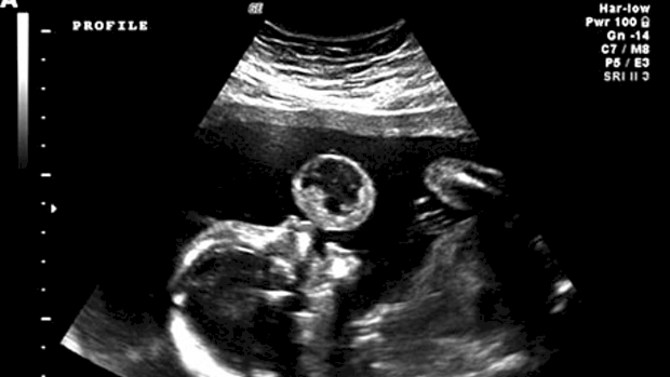“She’s my miracle child…”
A routine ultrasound led to a startling discovery no mother wants or expects.
Tammy Gonzalez, of Miami, Florida, was undergoing the routine procedure when doctors reportedly spotted what appeared to be a giant bubble being blown just above the baby’s mouth.
“Is that on me or the baby?” Gonzalez asked the doctor.
After further inspection, the doctors realized the amorphous bubble was something called a teratoma. Teratomas are extremely rare and usually fatal tumors that affect roughly 1 in every 100,000 births, Diply notes. Gonzalez’s doctors reportedly recommended she terminate the pregnancy lest she face a potential miscarriage.
But Gonzalez refused, insisting that something could be done to save her baby.
“They told me that type of tumor can grow so fast,” Gonzalez told ABC News. “I said, ‘There must be something we can do.'”
Fortunately, she came across something called endoscopic surgery, a procedure that had never been previously attempted. Her response when faced with that risky procedure was simply, “Let’s do this.”
Dr. Ruben Quintero, director of the Fetal Therapy Center at Jackson Memorial Hospital in Miami, performed the surgery for the first time. He snaked a tiny camera and surgical tools through a quarter-inch incision in Gonzalez’s abdomen and into the amniotic sac.
Gonzalez was awake during the entire procedure.
“I couldn’t feel the incision because of the local anesthetic, but I could feel the tube going into the sac,” she said. “It felt like a popping balloon.”
The camera reportedly allowed Quintero to view the tumor in close-up and estimate the risk of cutting it off.
“It was a decisive moment,” the doctor said. “We went ahead and cut the stem, and sure enough the tumor fell right out.”
Gonzalez said she was relieved as she watched the tumor glide away from her baby’s face on the ultrasound.
“It was amazing,” she added. “It was like a 500-ton weight lifted off of me.”
The tumor was too big to remove through the amniotic cell sac, so it remained floating in the womb until the actual birth four months later. By that time it had shrunk significantly.
“She’s perfectly fine,” Gonzalez said of her daughter Leyna. “She has a tiny scar on the roof of her mouth. She talks, she drinks. She is my little miracle child.”


